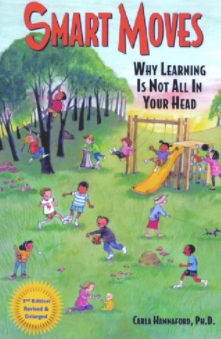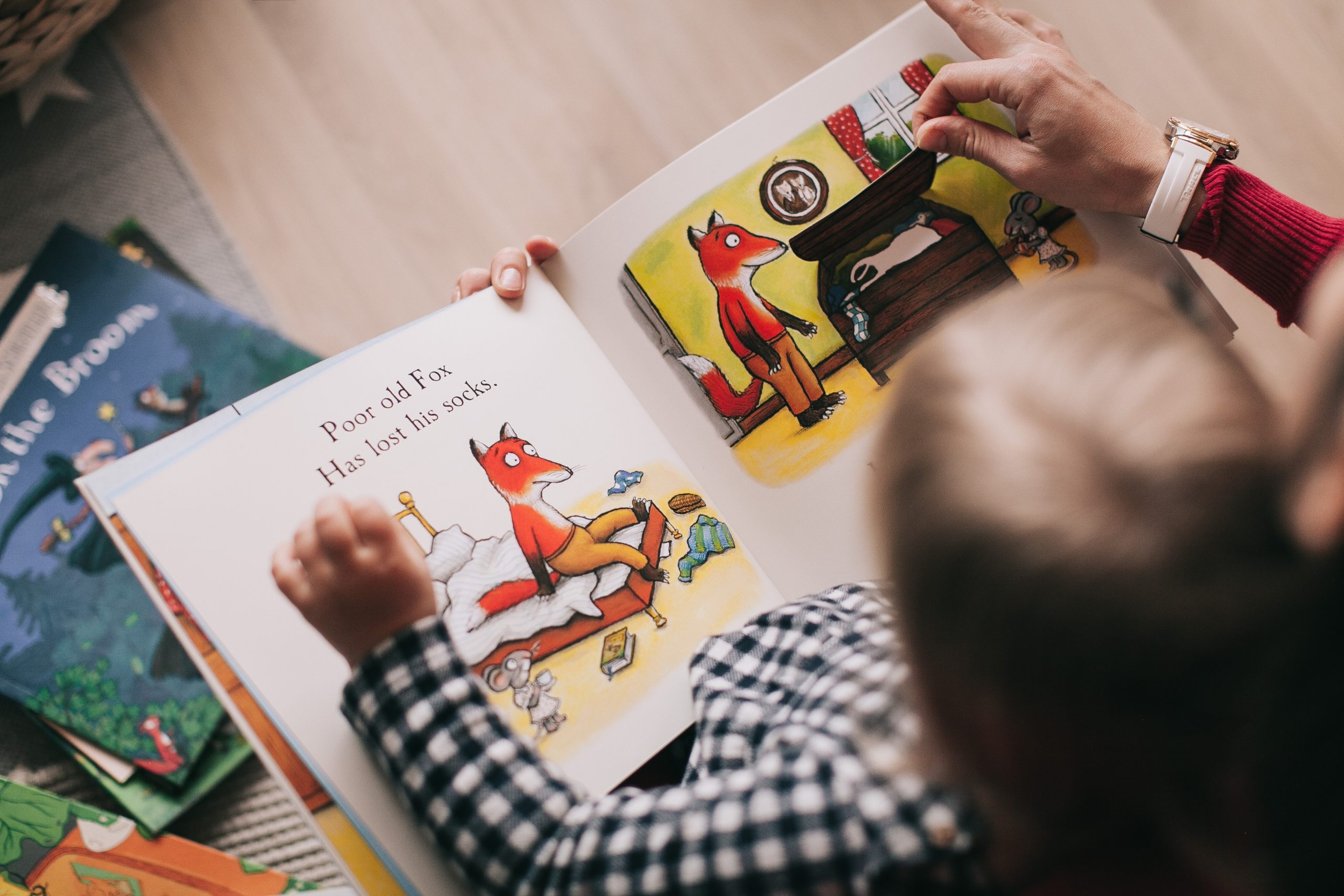As much as I am sure I would like to relive 9th grade and have my summer reading consist of the Canterbury Tales, I have instead spent my summer with Smart Moves by Dr. Carla Hannaford. This fascinating book draws many in depth connections between the brain, movement and learning. As Dr. Hannaford says, “movement is the anchor for learning.”
Of course, that is what we strive to achieve at Pop, Hop & Rock: strengthen the anchor that allows children to be better learners, making them better behaved and more in charge of their emotional and social skills. Big physical, full body activity is directly connected to executive brain function and these are the positive outcomes we can achieve when our executive brain is fully charged.
Reading and The Young Child
I am usually fascinated and drawn to big body, physical activity. But Dr. Hannaford pointed out some interesting facts about our eyes and the way we, as a culture, teach our children to read. As adults, we tend to frequently fall into the trap of believing our kids are just mini versions of ourselves, often forgetting that we are actually very different. One place this holds true, is our eyes. Ninety-five percent of our vision receptors are for peripheral vision, which allows us to see three dimensionally. The other, later developing, five percent, is for close up work and deciphering two-dimensionally.
When children are very young, it is this peripheral and three dimensional vision that most stimulates their visual learning environment. For example, they develop spatial awareness by deciphering movement of natural objects they see and shape awareness through their kinesthetic operation in their world as interpreted through their vision. This requires their physical movement to be coupled with interpretation of their world through three-dimensional, distance and peripheral sight. Until the age of 7, the eye is not naturally mature enough to interpret two dimensionally, yet upon entering school at age 5, or even at a younger, preschool age, we expect our children to sharpen their foveal, up close, two dimensional vision, learning letters and ultimately reading.

The muscles that shape the lens of the eye are short until around 7, which makes the lens long and thin. This allows for strong three dimensional, peripheral and long distance vision, which if you think about it, in caveman days, was all that was needed at a young age. Just like cave-children of old, kids today do not need up close, foveal vision on a consistent basis. They only need it briefly for basic function: bringing the Cheerio to their mouth or buttoning a shirt — both up close activities but three-dimensional ones. Then at 7 years old, the muscles of the lens begin to get longer allowing for foveal or up close, two dimensional focus to naturally develop. So if two-dimensional isn’t naturally available before age 7, why are we expecting kids to easily be able to decipher letters and read before that? Other than assuming they are mini-me’s, why are we asking them to interpret and recognize static, small shapes when the muscles of their eyes are not ready and equipped for this type of activity?
In Singapore early reading has been pushed too far with disastrous repercussions. Very young children are expected to do heavy reading and writing skills at the age of 3 or 4, straining their foveal focus before the muscles are ready. This has led to a population that has 85% of their 5 year olds in glasses due to myopia and nearly 100% of them in glasses by age 10.
Our education culture, like that in Singapore, has been founded on the belief that reading equals intelligence and the earlier the reading takes place, the more intelligent the child. What we are really doing, however is asking them to run before they can crawl.
So much of what children learn in the early years comes through their eyes as they make connections between their kinesthetic world, the space they physically occupy in the world, their impact on the world and others in it as they move through the world. The longer we can allow them to explore with their bodies, the more equipped they are to be strong learners who are socially, emotionally ready to behave in class and become the best they can be.
Get Smart Moves here
